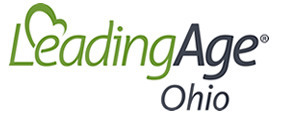Complete Story
03/25/2024
MedPAC Recommends 7% Reduction in Home Health Payments
MedPAC Recommends 7% Reduction in Home Health Payments
Source: NAHC Report March 19, 2024
The Medicare Payment Advisory Commission (MedPAC) last week released their March,2024 Medicare Payment Policy Report to Congress. Based on the Commission’s review of the payment and cost indicators, the MedPAC recommends that the Congress should reduce the 2024 Medicare base payment rates for home health agencies by seven percent.
MedPAC, once again, has concluded that home health agencies (HHAs) had been overpaid, this time for calendar year 2022. The aggregate FFS Medicare margin for freestanding HHAs was 22.2 percent. The Medicare margin ranged from 5.6 percent for those at the 25th percentile to 31.8 percent at the 75th percentile of the margin distribution. The report also measured all payer margins for HHAs. In 2022, the all-payer margin for freestanding HHAs averaged 7.9 percent.
In 2022, there was an increase of 4.0 percent in the cost per 30-day period for freestanding HHAs, a reversal of the trend for 2021, where cost per period decline by 2.9 percent. This increase in 2022 was due to higher cost per visit, but it was offset by a reduction in the number of in-person visits per 30-day period. However, even with this increase in cost, payments remained at high levels.
Although the number of HHAs declined by 1.1 percent between 2021 and 2022, MedPACs reports that the supply and volume indicators show that almost all FFS beneficiaries have access to home health services. It was noted that the share of inpatient prospective payment systems hospital discharges that were followed by at least one 30-day home health period also declined slightly to 18.7 percent from the previous year, however, the rate was higher than in 2019.
Additionally, over 98 percent of FFS Medicare beneficiaries lived in a ZIP code served by at least two HHAs, and 88 percent lived in a ZIP code served by five or more HHAs. The share of home health stays reported as being initiated in a timely manner (within 3 days of hospital discharge or a signed physician order) was 96 percent for the 12-month period ending September 30, 2022, a slight increase from prior years. During the December 2023 meeting, the MedPAC staff noted that measuring access using the number of HHAs per zip code may not be the most accurate proxy for determining access. However, they dd not offer any other metric that might be used.
The number of FFS Medicare beneficiaries using home health care and the volume of 30-day periods have decreased in recent years and continued to decline in 2022, falling 6.3 percent from 2021-2022. e MedPAC believes these declines may have been driven by a reduction in the number of beneficiaries in FFS Medicare as a growing share of beneficiaries are enrolling in Medicare Advantage. Additionally, the lower use of inpatient hospital care among FFS beneficiaries likely has contributed to this phenomenon.
In general, the Commission has found that per capita use of home health care services is comparable between urban and rural areas. In 2022, the number of 30-day periods per capita was slightly lower in rural than in urban areas, with beneficiaries in rural areas averaging 22.6 thirty-day periods per 100 FFS beneficiaries, while in urban areas the rate was 24.5 thirty-day periods per 100 FFS beneficiaries.
MedPAC looked at two claims-based quality outcome measures as a determinate for quality home health: Discharge to community and Potentially preventable hospital readmissions. During the two-year period from January 1, 2021, to December 31, 2022, the median risk-adjusted rate of discharge to the community from HHAs was 79.2 percent, a decline of 3.3 percentage points relative to the median from the January 1, 2018, to December 31, 2019, period. Rates of successful discharge to the community varied by provider type, with lower rates and greater decline observed in for-profit and freestanding agencies. The median rate of potentially preventable readmissions after discharge was 3.88 percent from July 1, 2020, to December 31, 2022, and did not vary significantly across provider types. Measures of patient satisfaction with home health services as reported through the Home Health Consumer Assessment of Healthcare Providers and System (HHCAHPS ) ratings in 2022 were comparable with prior years on most measures; the same share of patients in 2021 and 2022 reported positive responses for three of the measures.
MedPAC continues to report that HHAs have adequate access to capital as evidenced by recent acquisition trends suggesting that the home health industry has been attractive to outsider, although access to capital is a less important indicator of FFS Medicare payment adequacy for home health care because this sector is less capital intensive than other health care sectors.
The National Association for Home Care and Hospice (NAHC) strongly disagrees with this recommendation and will advocate against it in Congress. There are various flaws in the MedPAC’s calculations. These include certain exclusions in calculating costs, such as marketing, telehealth, and taxes. MedPAC also limits their data to free-standing agencies, omitting those that are hospital based. Lastly, while noted in the report, MedPAC does not seem to give much consideration to the all-payer profit margin, instead solely focusing on the Medicare FFS alone. It is well known that HHAs have had to use FFS Medicare payments to subsidize under payments by Medicare Advantage plans and Medicaid. In many instances, a 7% payment reduction would prove devastating to home health agencies across the nation, forcing many out of business and leaving patients without the ability to enjoy the Medicare benefit to its full extent. NAHC will continue to monitor MedPAC’s work in this space and work with Congress to ensure these excessive and unnecessary cuts do not make their way into official Medicare policy.
